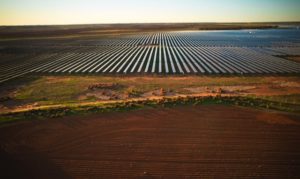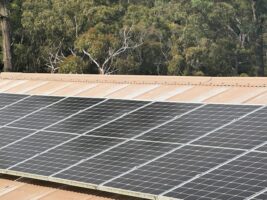Australia’s local government councils, many of which are already leading by example in the shift to renewables, will be given extra incentive to invest in clean technologies via a new $250 million program from the Clean Energy Finance Corporation (CEFC).
The program, launched late last week, is designed to provide flexible and competitive fixed-rate, long-term finance tailored to the needs of Australian councils, as they invest in renewable energy and other technologies essential to the low-carbon transition.

CEFC executive director of corporate and project finance, Paul McCartney, said there were compelling reasons for Australian councils to take proactive steps to manage their energy use.
“Local governments across Australia administer a vast network of street lights, community centres, libraries, sport and recreation facilities and other public access buildings,” he said.
“We see strong potential for operational savings through a range of renewable energy, energy efficiency and low emissions technologies.”
Of course, as is illustrated in countless reports on this and our sister website – here, here, here, and here to name a few – many Australian councils have, themselves, already recognised this potential and acted on it.
Just last month, for example, Gosford City Council announced its plans to install 435kW of rooftop solar on seven council facilities in a move it expects will save it more than $80,000 a year in electricity costs.
And as Giles Parkinson reports today from Paris, small government is well represented at the COP21 climate talks too, as part of a sub-set of councils, regions and states that California governor Gerry Brown has dubbed the “super nationals,” for actually delivering on the kind of renewable energy and emissions reduction targets needed to respond to the science.
For its part, the CEFC hopes that its Local Government Finance Program will provide Australia’s hundreds of local councils with access to finance to help accelerate this trend even more.
“Australia’s has more than 560 local councils, which spend more than $32 billion annually on housing and community amenities, as well as transport and communications infrastructure,” McCartney said.
“The CEFC’s financing solutions can help councils proactively manage these costs, whether through reducing energy consumption in high use areas such as leisure and aquatic centres or accessing fleet financing to enable the council’s conversion to electric vehicles.
Key elements of the program include finance for eligible projects across renewable energy, energy efficiency and low emissions technologies; loans of up to $10 million for each single project or package of works and a three-year drawing-down period.
It also offers the option for multiple councils to enter into joint financing agreements for eligible projects, as well as access to competitive fixed-rate longer-dated senior debt (up to 10 years) and the benefit of a straightforward approval process with simple loan documentation.
“This program will support major investment activities across a range of eligible projects,” said McCartney.
“For example, there are clear benefits to councils from converting street lighting to more efficient LED lighting, as well as installing rooftop solar PV on council-owned buildings.
“The CEFC has identified energy from waste projects as an area where councils can generate energy by reusing landfill waste,” he added.
“We’ll also be speaking with councils about improving air conditioning, installing smart controls and voltage optimisers to improve the energy efficiency and performance of their buildings.
“In a period of historically low interest rates, now is the time for councils to act to reduce energy costs and lock in the long term benefits of energy efficiency,” McCartney said.
“Because these investments lead to lower energy use, councils can reduce their ongoing operating costs. These savings may be sufficient for councils to repay the loan without impacting their net cash flows.”










